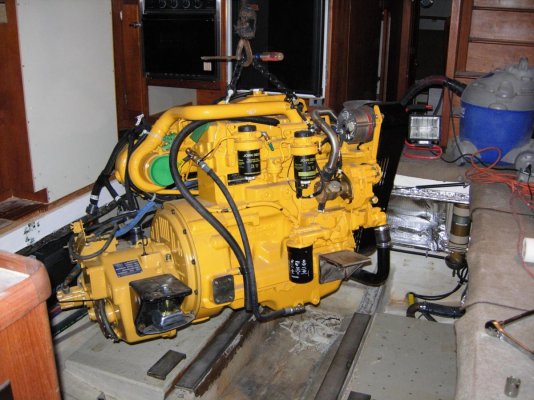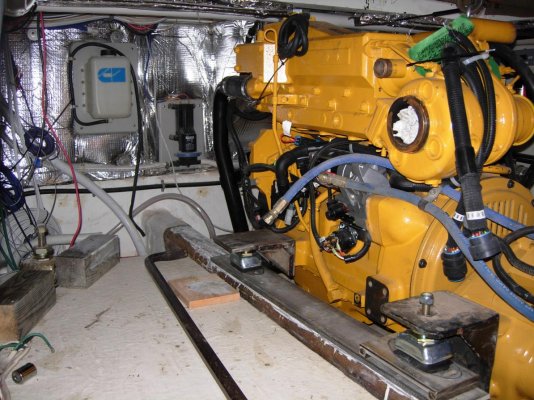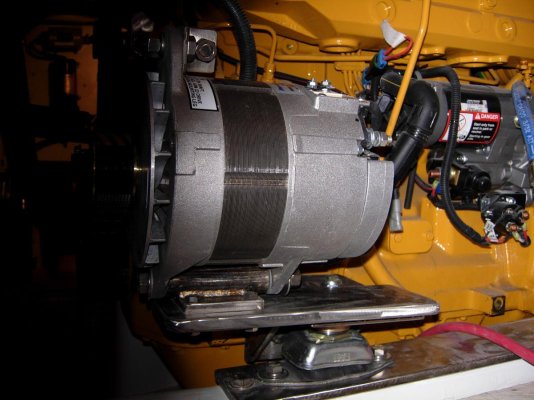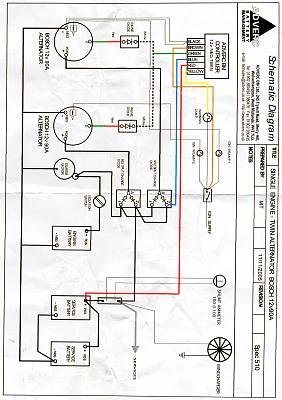Ted, thank you for so generously sharing your custom alternator mount info with me.
One final question: how do you work the stainless (weld, drill, cut, trim, file) to fabricate the parts? The welding is probably TIG, so that'll be outsourced. But the parts working? Stainless is an aggravating metal to work...
Stainless isn't tough to work with the right tools.
The boatyard where I did my refit, works primarily on watermen's boats. They use a lot of stainless but the finish generally isn't yacht quality. They stock a suprising amount of flat bar, angle, round stock, etc. The intermediate plate was likely 4" X 1/2" flat bar. You figure out what you need, measure twice, cut and then weigh the piece you want. The yard sells most stainless by the pound, same way they buy it.
Working stainless only requires basic tools. You need a 4" hand held grinder. To cut stainless, a very thin fiber cutting disc on the grinder works very well. It would probably take less than 1 minute to cut off a piece from the 4" X 1/2" stainless flat bar. For rounding corners, dressing the cutoff surfface, and polishing we use sanding discs on the 4" grinder. These discs are specifically for working metal and come in different grits. Usually we have a course one for shaping, medium for dressing, and fine for polishing the surfaces. Don't use sanding discs on stainless that have been used on regular steel. Specks of the steel will remain on the disc, transfer to the stainless, and later form surface rust.
For drilling holes, a drill press is invaluable. The press allows you to apply much more pressure which makes the drill bit cut better. Every hole on that project was done on the drill press. You spend more time bolting and unbolting parts off the engine, but the drilling is much easier.
You need good metal drilling bits (not Harbor Freight junk). Sean has a drill bit cabinet. There are a minimum of probably 10 of every size of the smaller bits (up to 1/2") in the cabinet. There is a bench grinder with a fine stone just for resharpening drill bits. If you want to drill holes in stainless, you need good bits, keep them sharp, use a drill press when possible and use cutting oil to lubricate and cool the drill bit and metal.
While the shop has my MIG and TIG machine including spool guns for stainless and aluminum, most of the welding is done with a simple stick welder. In a commercial yard, they are constantly repairing work boats. Sometimes at the dock, sometimes in the travel lift slings, and sometimes blocked in the yard. A diesel powered stick welder can be moved anywhere in the yard and used in moderate winds. Since that's the only welder that works in all conditions outside the building, it's generally the welder of choice inside as it's what you're use to. If you look at the welds on the alternator bracket, there is no doubt about the quality of the welds you can make with a stick welder and the right rods.
Below is the link to the thread on my refit project. It will give you some insight to the yard I use and the great people who work there. It's a commercial waterman's yard, not pretty, but they have what it takes to do quality durable fabrication.
http://www.trawlerforum.com/forums/s32/my-short-haul-refit-19105.html
Ted

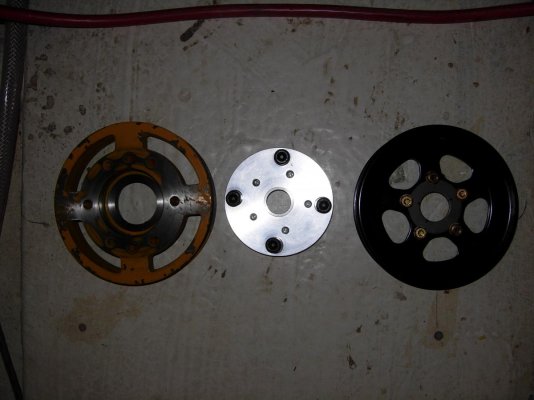


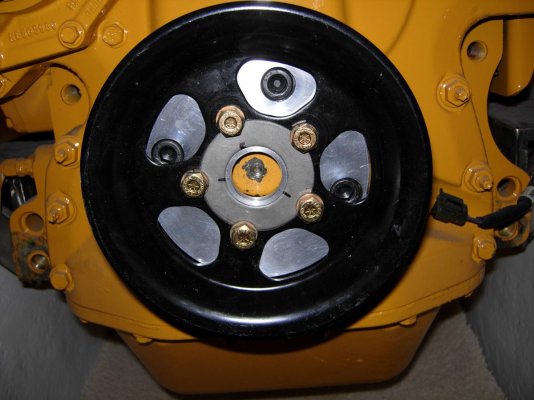

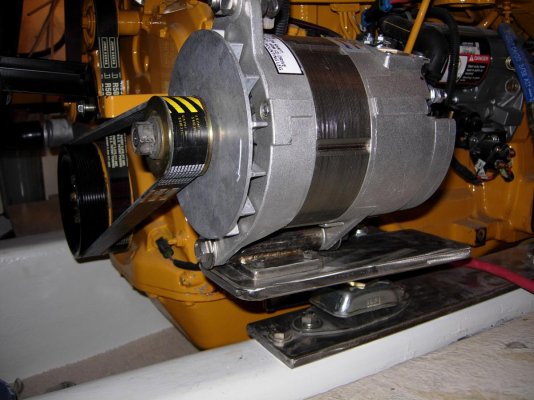




 . I'm in the process of just what you mention, but I'm not sure I can get to a serp belt with how old my engine is. Can you recommend a Deere dealer that is more familiar with Deere marine engines? The ones in my area (farm country north of Seattle) are only familiar with agricultural Deere engines. Hatton Marine is an excellent recommendation, I'll give them a call thanks.
. I'm in the process of just what you mention, but I'm not sure I can get to a serp belt with how old my engine is. Can you recommend a Deere dealer that is more familiar with Deere marine engines? The ones in my area (farm country north of Seattle) are only familiar with agricultural Deere engines. Hatton Marine is an excellent recommendation, I'll give them a call thanks.